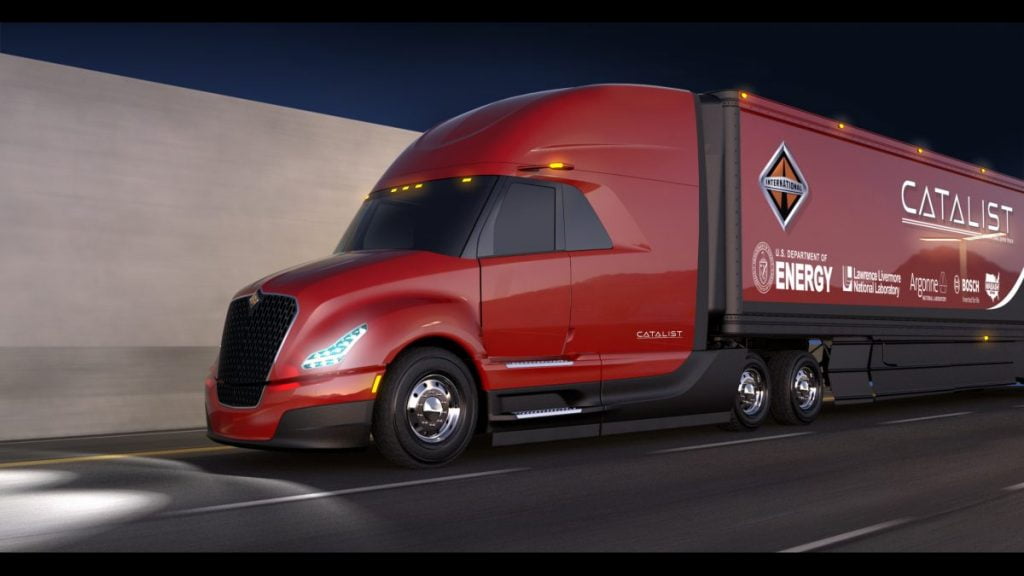Navistar on Wednesday announced its SuperTruck demonstration vehicle, CatalIST, achieved a freight efficiency improvement of 104 percent – more than double the 50 percent goal set by the U.S. Department of Energy (DOE) for its SuperTruck program
Against a 2009 base line model truck, CatalIST achieved fuel economy of 13 miles per gallon and demonstrated 50.3 percent Brake Thermal Efficiency (BTE) and a path towards 55 percent BTE, Navistar adds.
Mark Stasell, Navistar vice president of product development, says CatalIST demonstrates the potential for reduction in the trucking industry’s consumption of energy.
Stasell pointed to Navistar’s predictive cruise control technology as one of the technical innovations the company achieved through the program. Predictive cruise control looks ahead of the vehicle and recognizes the terrain and continuously calculates the most efficient speed and gear for optimal fuel economy in real time. Unlike conventional predictive cruise technology, the company’s predictive cruise control uses preinstalled GPS maps and the latest commercial route data to make adjustments to cruising speed without the need to pre-drive the route.
Other improvements over the course of the five year project included:
- Integration of Navistar N13 Engine utilizing proprietary intelligent controls and high efficiency combustion.
- Reduction in aerodynamic drag through replacement of cab- and hood-mounted mirrors with a series of cameras and interior-mounted monitors, which also yield equal or better indirect vision for the driver.
- A new LED headlamp system that reduces lamp size for a more aerodynamic shape and cuts electrical power requirements by greater than 80 percent, while improving luminous output and light color for improved night-time direct driver vision and reduced driver fatigue.
- An all-new shape with a sloped windshield and wedged cab for improved aerodynamics. Innovative use of lighter-weight carbon-fiber panels in the upper body, roof headers, back panel, and dash panel.
- A hybrid front suspension and lightweight rear suspension that leverages lightweight alloys with composite materials, reducing weight and enabling an electronic ride height management system, which provides dynamic ride height and pitch control for improved aerodynamics.
- Aerodynamic improvements that reduce the trailer’s drag coefficient by more than 30 percent.



